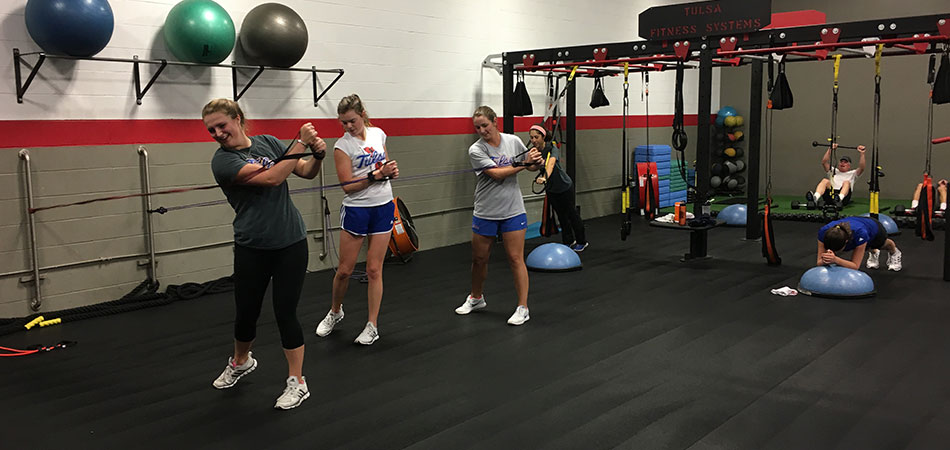Golf Conditioning For The Golfing Athlete: Why Condition For Golf?
Every golfer wants to play better golf, and golf is a highly athletic event! The most common method used to achieve this goal is a combination of professional lessons and more practice. Although this approach seems logical, it is the very reason many golfers end up injured and rarely reach their potential. Why? Simply, because few golfers associate the need for improved physical conditioning with their quest for improved performance.
Golf Fitness Systems approaches golf conditioning in a truly sport specific manner. Our program is built entirely upon the principals of functional, multi-planar, multi-joint movements. Unlike exercise programs developed upon a bodybuilding format, or upon muscle isolation exercises, functional exercises are designed to restore balance, lengthen, strengthen and coordinate movement patterns specific to the golf swing. The human brain does not think in terms of isolated muscles. Instead, it recruits groups of muscles in uniquely programmed sequences. A golfer’s conditioning program must therefore be designed to integrate the whole body.
Mobility/Flexibility, Stability, Strength, & Power
There are 4 physical factors that must be addresses in order to help you get better. The first is 1) Mobility/Flexibility, the second is 2) Stability, the third is 3) Strength, and the fourth is 4) Power.
The first step in the Golf Fitness Systems golf-conditioning program is to improve mobility/flexibility, as this is the catalyst for all subsequent aspects of golf conditioning. Stretching allows the development and maintenance of optimal joint range of motion in the golfer’s body. When the golfer is not flexible, the body’s biomechanics are altered, progressively disrupting swing mechanics. In other words, optimal joint range of motion is a biomechanical prerequisite of the golf swing. Once mobility and flexibility is restored to appropriate areas and the musculoskeletal system is balanced, then stability can be handled.
Stability is important since a stable body creates a solid framework for all movements and activities. Additionally, a stable, well-balanced body is less likely to be injured. What exactly does stability really mean, and how does it apply to the game of golf? There are two key types of stability. The first is the ability to remain in one position (static) for a period of time without losing good structural alignment. The second type of stability is the availability to keep all working joints in optimal alignment during any given movement. When you have inadequate postural stability, you have a very poor chance of ever reproducing a good shot consistently.
When stability is achieved, strength can be built using functional movement patterns that will readily transfer to the game of golf. The need for strength can’t be overstated.
Finally, the last progression is to develop power and speed. The more power a golfer can transfer from his or her body through the club to the ball, the farther he or she will be able to drive the ball. In conclusion, you can add 10-20+ yards to your drives and drop strokes off your golf game if you incorporate these tips into your workout/training program.


